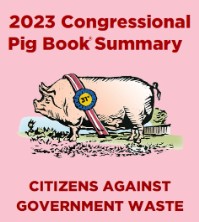
Sell Excess Federal Real Property
1-Year Savings: $3 billion
5-Year Savings: $15 billion
Due to a combination of negative incentives and unnecessary red tape, selling federal real estate is a long, costly process. Reforms are essential, because Uncle Sam owns more real property than any other entity in America: approximately 267,000 buildings and structures covering 1. billion square feet of office space. An October 31, 2017, Congressional Research Service (CRS) report found that, “In FY 2016, federal agencies owned 3,120 buildings that were vacant (unutilized), and another 7,859 that were partially empty (underutilized).”
In FY 2022, the General Services Administration (GSA) reported total assets of $59 billion, an increase of 17.3 percent from the $50.3 billion from FY 2021. These include more than “363 million square feet of space in 8,397 buildings in more than 2,200 communities nationwide.”
When the GSA Public Buildings Service reports a property as excess, that property must first be screened for use by other federal agencies. If another agency wants it, that agency gets it. If the property goes unclaimed by every eligible agency, according to Title 40 of the U.S. Code and the McKinney Vento Homeless Assistance Act, it must be screened for use by providers of homeless shelters, who can use the property for free. If shelters are not interested, the property is screened for other public uses and sold for up to a 100 percent discount of market value. Finally, if no public use can be identified, the property is auctioned and sold. That process is upside down: The government should first try to sell the property and give it away only if there is no other alternative.
The government’s current leasing practices are also problematic. They have been on the GAO’s High Risk List since January 1, 2003. According to the April 20, 2023, report, GSA’s “efforts to improve the accuracy of addresses in its Federal Real Property Profile database have yet to show tangible results. This makes it difficult to manage federally owned assets.”
A March 2014 GAO report reviewed case study projects from four agencies that rank in the top 10 in federal real property holdings. The GAO found that the federal government can end up spending more money on renovation costs and lease payments over the course of a long-term lease than it would if it just paid the initial contract price and bought the building outright.
A July 15, 2015, GAO report found that “GSA’s progress toward a sustainable portfolio is unclear because GSA has not assessed the gap between the performance the portfolio needs to exhibit to be sustainable and its current performance.”
The GSA also operates the Federal Buildings Fund (FBF), which is funded by rent received from other agencies. The FBF, which is used to fund alterations, repairs, and construction projects, increased from $56 million in FY 2007 to $11.9 billion at the end of FY 2022, because Congress has provided less money than requested by the executive branch and generated by the FBF. The obligational authority for repairs and alterations declined from $855 million in 2005 to $10.6 million in FY 2022 and, as a result, even though the agency has access to a large amount of money, it claims to be unable to provide sufficient resources to handle all needed alterations, repairs, and construction.
There are some signs of progress. On December 12, 2016, President Obama signed into law the Federal Property Management Reform Act of 2016. The act requires the U.S. Postal Service to annually provide a list of properties with available space for federal agencies and establishes the Federal Real Property Council to help guide and implement an “efficient and effective real property management strategy,” reduce expenses, and determine how to better manage assets and property. It also requires federal agencies to assess space that is not fully occupied and provide an annual list of real property under their control, along with its condition. On December 20, 2017, GSA released an extensive inventory of all federal real property. The property that was identified included 5,066 bathrooms, 16,570 parking lots and garages, along with more than 1,500 prisons, nearly 17,000 warehouses, 766 hospitals and 2,427 schools. The transparency provided in this report is a positive step in providing the federal government with the necessary tools to better identify and eliminate vacant, wasteful property.
Unfortunately, progress has been slow. A June 8, 2023, GAO report found that it took nearly two years to sell any of the 12 properties that the Office of Management and Budget sanctioned for sale in 2019. As of May 2023,10 of the properties have been sold, raising $194 million. In the meantime, a startling amount of federal office space remains empty. A July 13, 2023, GAO report noted that 17 of 24 federal agency headquarter buildings sampled between January through March of 2023 used on average 25 percent or less of their capacity. The report noted that federal agencies spend
approximately $2 billion each year operating and maintaining buildings, regardless of occupancy, and around $5 billion annually to lease office buildings.
From The 2023 Congressional Pig Book

















